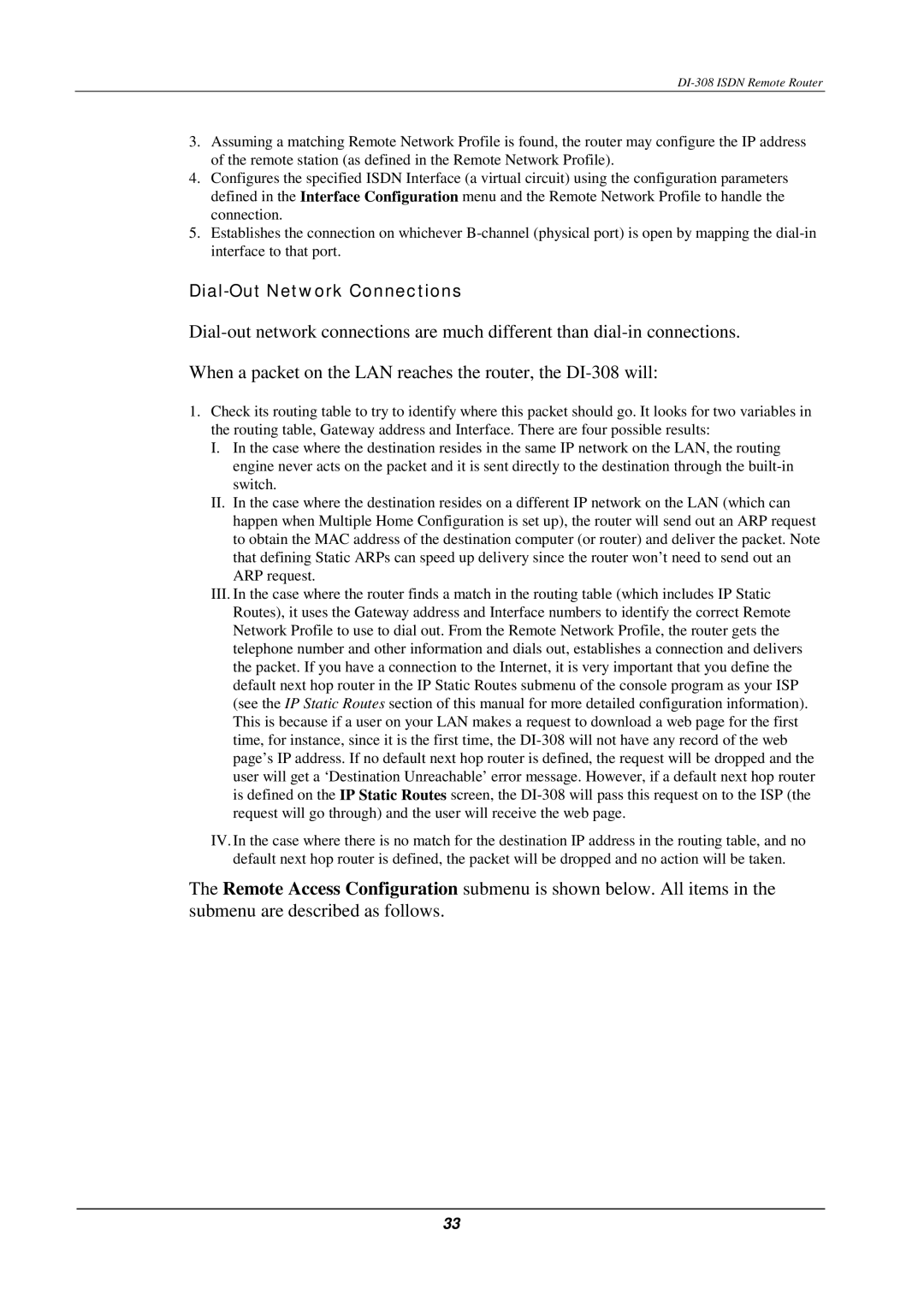
DI-308 ISDN Remote Router
3.Assuming a matching Remote Network Profile is found, the router may configure the IP address of the remote station (as defined in the Remote Network Profile).
4.Configures the specified ISDN Interface (a virtual circuit) using the configuration parameters defined in the Interface Configuration menu and the Remote Network Profile to handle the connection.
5.Establishes the connection on whichever
Dial-Out Network Connections
When a packet on the LAN reaches the router, the
1.Check its routing table to try to identify where this packet should go. It looks for two variables in the routing table, Gateway address and Interface. There are four possible results:
I.In the case where the destination resides in the same IP network on the LAN, the routing engine never acts on the packet and it is sent directly to the destination through the
II.In the case where the destination resides on a different IP network on the LAN (which can happen when Multiple Home Configuration is set up), the router will send out an ARP request to obtain the MAC address of the destination computer (or router) and deliver the packet. Note that defining Static ARPs can speed up delivery since the router won’t need to send out an
ARP request.
III.In the case where the router finds a match in the routing table (which includes IP Static Routes), it uses the Gateway address and Interface numbers to identify the correct Remote Network Profile to use to dial out. From the Remote Network Profile, the router gets the telephone number and other information and dials out, establishes a connection and delivers the packet. If you have a connection to the Internet, it is very important that you define the default next hop router in the IP Static Routes submenu of the console program as your ISP (see the IP Static Routes section of this manual for more detailed configuration information). This is because if a user on your LAN makes a request to download a web page for the first time, for instance, since it is the first time, the
IV. In the case where there is no match for the destination IP address in the routing table, and no default next hop router is defined, the packet will be dropped and no action will be taken.
The Remote Access Configuration submenu is shown below. All items in the submenu are described as follows.
33
